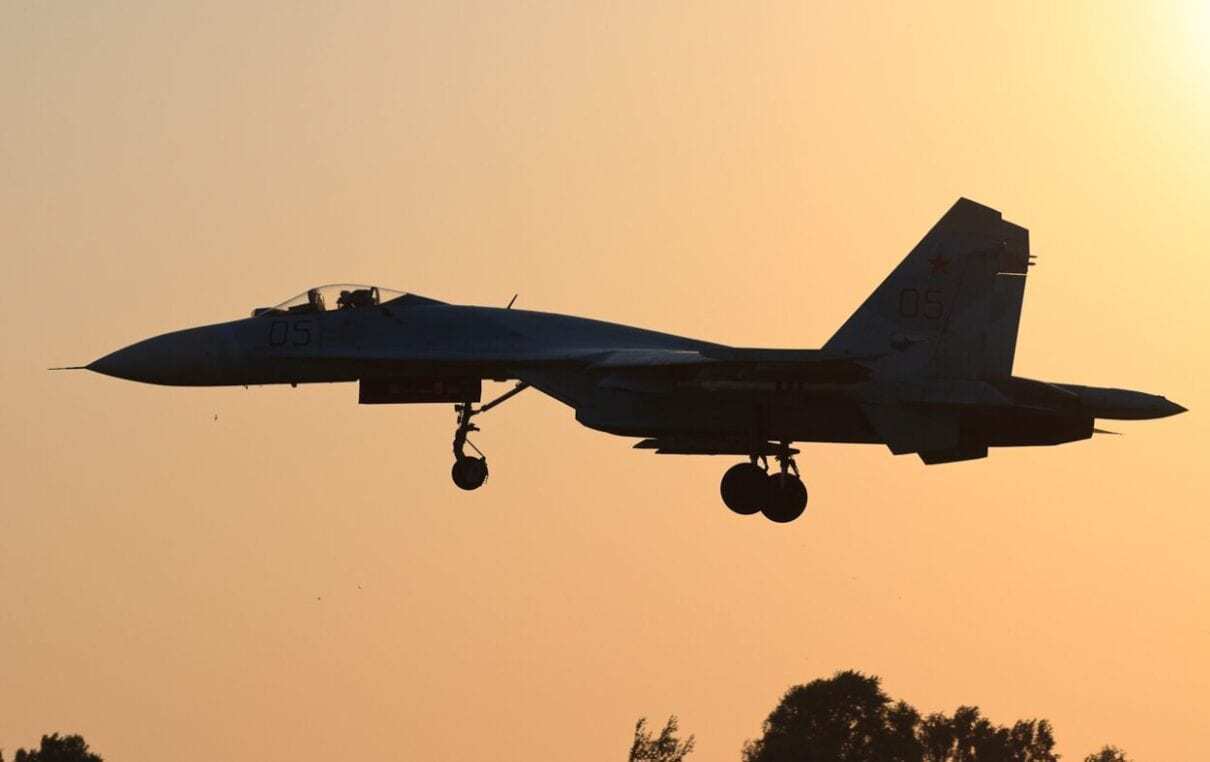This month, the United States Air Force deployed multiple B-52H Stratofortress bombers around the world as a show of military strength and commitment to protect America’s allies. Moscow apparently didn’t take kindly to that deployment this week. One of those bombers was confronted by Russian fighters over the Baltic Sea while the B-52H was conducting a routine patrol flight over the neutral waters.
Russia’s Western Military District’s press service told reporters on Wednesday that the strategic bomber approached the national sovereign airspace of the Russian Federation and a fighter was sent to shadow and escort the Cold War era B-52H. Due to differences between the Latin alphabet and the Russian alphabet, which was derived from Cyrillic script, the Russian military identified the upgraded Stratofortress as a “B-52N” instead of the correct “B-52H” designation.
“A Su-27 fighter jet of the Baltic Fleet’s air defense units on duty was scrambled to identify the air target and to intercept it in order to prevent the violation of the state border of the Russian Federation,” the press office reported, according to Tass. “The pilot of the Russian fighter jet identified the air target as a B-52N [sic] strategic bomber of the US Air Force’s Air Force Global Strike Command and shadowed it over the Baltic Sea.”
The press service said that after the U.S. bomber turned away from the Russian border the Russian fighter jet safely returned to its home airbase.
“The flight of the Russian fighter jet took place in strict accordance with international airspace rules,” the Western Military District’s press service added.
It isn’t surprising that that in this recent ‘close encounter’ between an American bomber and a Russian military deployed a Su-27.
Russia’s Fourth-Generation Combat Aircraft
The Sukhoi Su-27 (NATO reporting name “Flanker”) was the last of the Soviet Union’s major fourth-generation fighters. Some 680 of the Su-27s have built and it has been a proven combat aircraft since it first entered service in 1985. Designed as an air superiority fighter, much like the U.S. Air Force’s F-15 Eagle, the Su-27 has proven flexible enough that it could be employed in a ground strike role as well as an effective interceptor.
It is in the latter role that Russia currently utilizes the Su-27, and it is ideally suited to the role. The Flanker can reach Mach 2.35, and it carries up to eight air-to-air missiles – generally of short to medium range; other variants specialize in Beyond Visual Range combat.
The fighters have been a key component in Russia’s aerial defense and the combat aircraft have been sortied over the neutral waters of the Baltic, Barents and Black Seas to intercept and escort foreign aircraft, but the Su-27 has also been deployed to escort reconnaissance and patrol aircraft as well.
This game of cat and mouse between bombers and fighters has continued at almost disturbing levels. Moscow has been vocal about the number of western patrol flights in the Baltic, Barents and Black Seas over the past year, while at the same time Russia has increased its own patrol flights over the Pacific Ocean and Bering Strait. Everything has been routine and will likely continue to be so – at least until it isn’t.
Peter Suciu is a Michigan-based writer who has contributed to more than four dozen magazines, newspapers and websites. He regularly writes about military small arms, and is the author of several books on military headgear including A Gallery of Military Headdress, which is available on Amazon.com.

